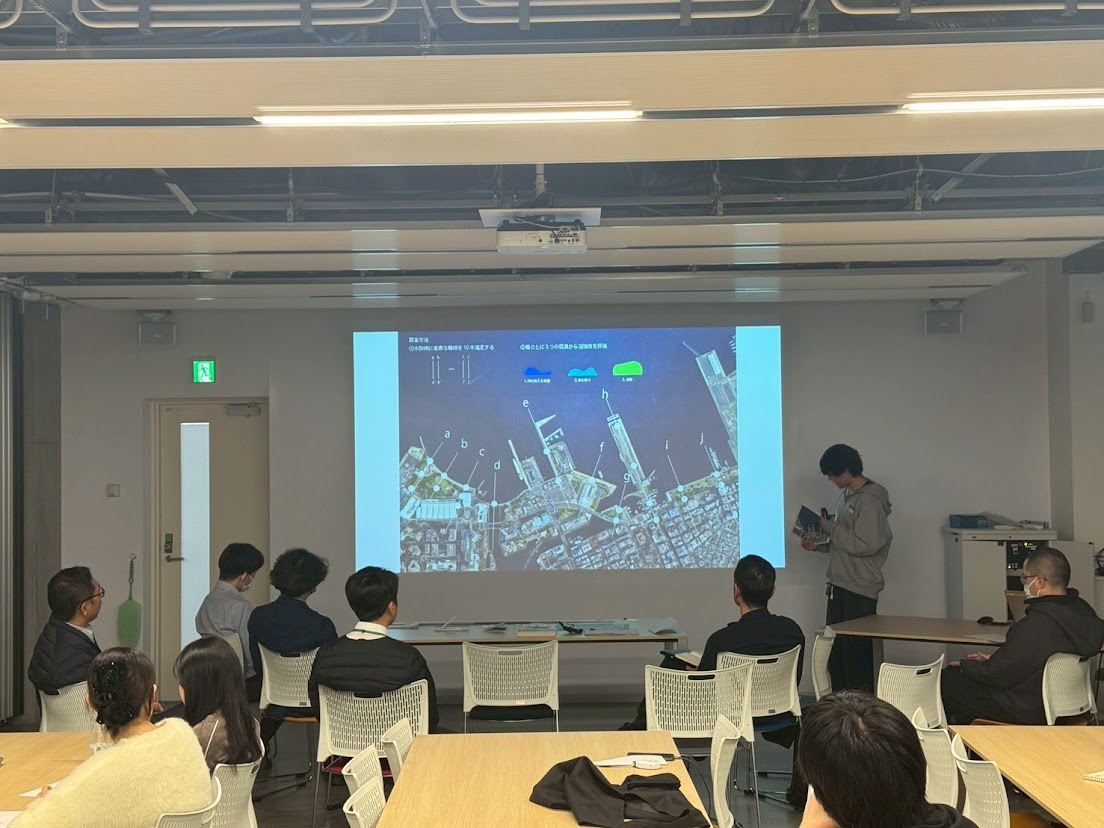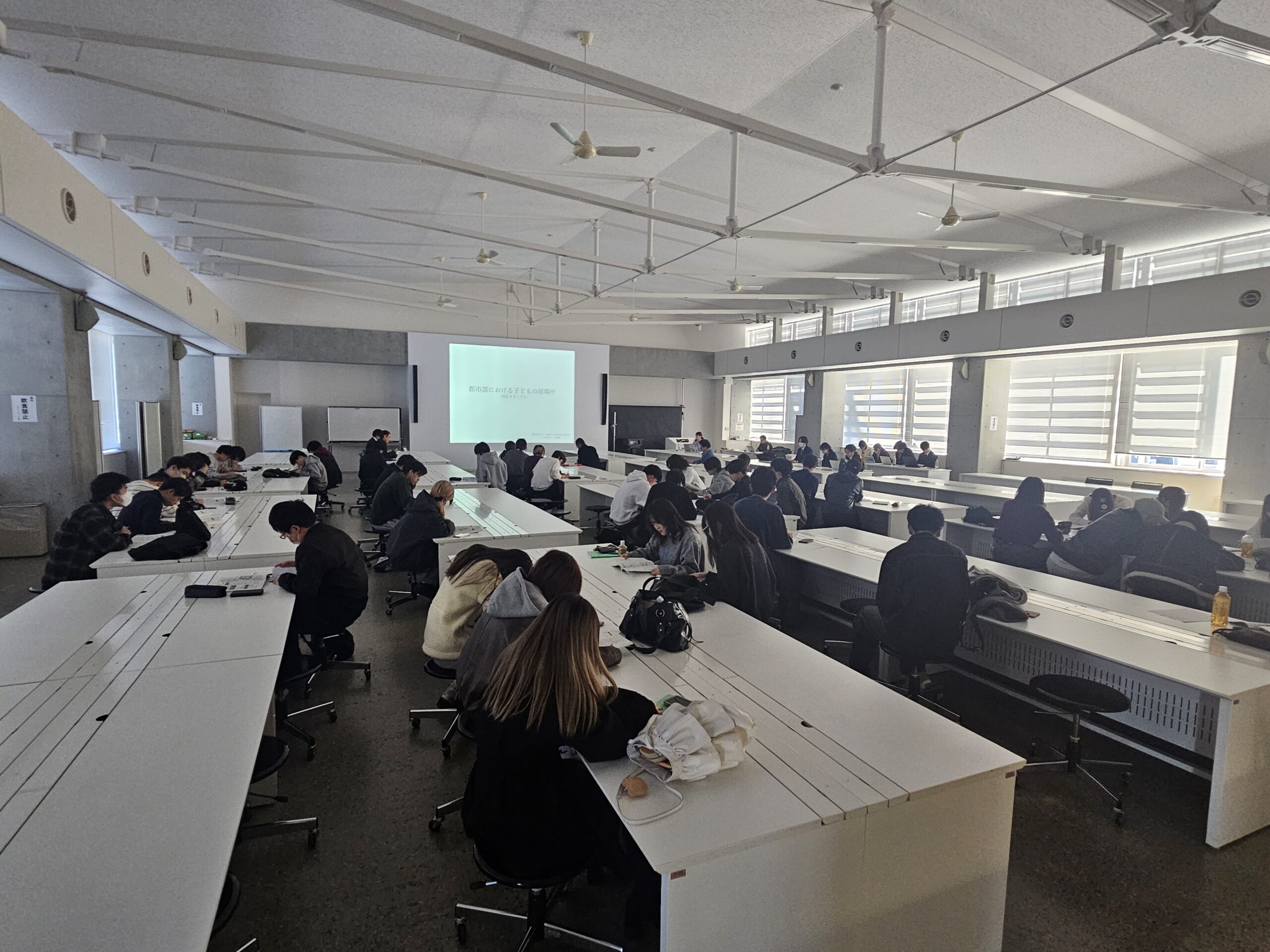[理工学部、建築・環境学部教養学会ミニ講演会]
第58回理科系学生のための公開英語講演会
On the Vibration of Buildings:
A Case Study of the Reliquary Hall of Engakuji Temple
建築物の揺れ: 円覚寺舎利殿の例から
講師: 建築・環境学部
高島 英幸 先生

As is stated in the homepage of Nikken Sekkei, a company which contributed to the task of designing the Tokyo Skytree, a super-high tower of 634m in Tokyo, “the traditional towers in Japan, “five-story pagoda temples,” have never fallen down due to any earthquake to date, which mysterious fact is ascribed to the temple’s “Shimbashira (Center Column)built at the center of the temple.” In fact, if our memory serves us right, we have rarely heard of the news that the historical wooden architecture represented by five-storied pagodas collapsed due to earthquakes, have we? If we are on track in assuming those ancient buildings as having excellent resistance to earthquakes, the question is raised as to why they have such strength. Is it because the materials with which they are built have property strong enough or flexible enough to endure intense vibrations; or else, is it because the structural property of the ancient architecture itself, that is, the way they are composed of each constituent structure keep them strong enough to endure the vibrations caused by earthquakes?
On June 19th, 2023, the 58th session of the English Lecture Meeting for Science Major Students was held under the sponsorship of the Academic Society of Faculty of Liberal Arts, with Professor Hideyuki Takashima of the College of Architecture and Environmental Design as an invited lecturer to give a clue to the question above. This session was the 5th opportunity on which the lecturer gave a talk with the title above to the audience, many of whom were students of architecture.
In the first half of this lecture, Professor Takashima introduced the notion of Simple Harmonic Motion as a preliminary notion needed to understand the nature of vibration in general. In the second portion of the lecture, taking as an example the Reliquary Hall of Engakuji Temple(円覚寺舎利殿), the sole national-treasure building in Kanagawa Prefecture, the lecturer illustrated with pictures, photos and data how the geniuses in architecture in the middle age made every possible effort to protect Buddha’s ash, the most valuable treasure for people in those days, from major natural disasters.
Professor Takashima has been engaged in research on structural behavior of ancient buildings, especially their vibrations under the conditions of earthquakes. In this lecture, he showed the audience, many of whom are students majoring in architecture, how he has analyzed the structural behavior of the Reliquary Hall of Engakuji Temple by adopting computer simulation techniques for its analysis. This lecture turned out to be a great opportunity for the audience, many of whom were students of architecture, to learn how the historical buildings’ resistance to earthquakes is explained based on such basic notions as Simple Harmonic Motion or Simplified Model for Buildings.
In the subsequent Q and A period, Professor Takashima answered all the questions asked by the audience including the following two questions:
Questions and Answers
Q. Besides the technology of Center Column Vibration Control (Shimbashira-Seishin) for five-storied pagodas, are there other traditional technologies characteristic of the historical architecture that make them resistant to earthquakes?
五重塔における心柱制震以外で、これまで見てきた興味深い歴史的建造物の耐震技術はありますか?
A. With traditional buildings, the means of keeping them resistant to earthquakes is most typically observed with the way their walls and braces are arranged. As shown by the figure and the photo in this slide, we could take the flying buttresses found in old gothic churches as a unique, as well as interesting, example illustrating such cases. They are arranged to prevent the outward deformation of columns and their thrusts.

Q. Is it possible to apply the technology of Center Column Vibration Control (Shimbashira-Seishin) to more general housing, for example, to high-rise apartments?
一般的な住宅、例えば高層マンションなどにこの心柱を用いることは可能なのでしょうか?
A. In terms of technology, it would not be impossible to do so. However, the amplitude and duration of vibrations for such apartment buildings are limited severely by building standards. Besides, aside from cost issues, if we were to apply the technology of Center Column Vibration Control to more common housing as you suggest, it would be extremely difficult to arrange rooms and the equipment inside the buildings.







